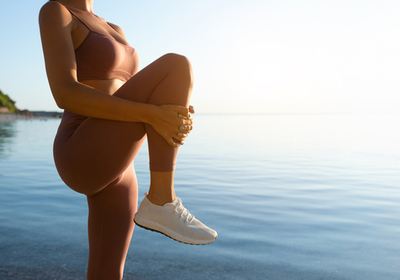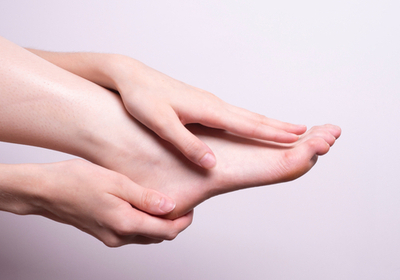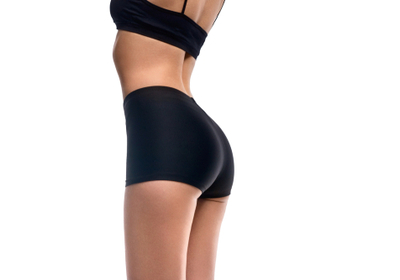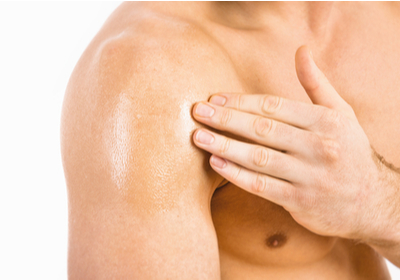VIDEO
Plank Knee to Elbow, Elbow to Knee Crunch, Plank Shoulder Touch
- Core
- Arms
- Back
- Legs
- Abs
- Biceps
- Triceps
- Trapezius
Level:Intermediate
Trainer:
Equipment:Fitness Mat
Plank Knee to Elbow, Elbow to Knee Crunch, Plank Shoulder Touch
- Core
- Arms
- Back
- Legs
- Abs
- Biceps
- Triceps
- Trapezius
Level:Intermediate
Trainer:
Equipment:Fitness Mat
1. Lay face down on a fitness mat. Push yourself up into a plank position. Keeping your core tight and back flat, bring your right knee to your left elbow. Make a pause for a second then slowly get back to the starting position. 2. Lay back on the ground. With hands on the back of your head, crunch up bringing your elbows to your knee, and get down to the starting position. 3. Start in a push-up position. Lift on hand off the floor and touch the opposite shoulder remaining as stable as possible.
save to ...
RECOMMENDED FOR YOU
- Core
- Abs
- Lower Back
Duaration: 00:15
save to playlist
- Core
- Arms
- Back
Duaration: 00:15
save to playlist
- Core
- Arms
- Legs
Duaration: 00:15
save to playlist
- Core
- Back
- Abs
Duaration: 00:15
save to playlist
- Core
- Back
- Shoulders
Duaration: 00:15
save to playlist
- Core
- Biceps
- Triceps
Duaration: 00:15
save to playlist
- Core
- Arms
- Legs
Duaration: 00:13
save to playlist
- Abs
- Triceps
- Upper Back
Duaration: 00:15
save to playlist
- Core
- Legs
- Abs
Duaration: 00:15
save to playlist
- Core
- Shoulders
- Gluteus
Duaration: 00:15
save to playlist
- Core
- Legs
- Abs
Duaration: 00:15
save to playlist
- Core
- Arms
- Legs
Duaration: 00:14
save to playlist
- Core
- Arms
- Legs
Duaration: 00:15
save to playlist
- Legs
- Gluteus
- Hips
Duaration: 00:15
save to playlist
Blog
People often underestimate hamstrings. Often, focusing on training the quadriceps and calves, hamstrings seem less important. However, you should remember that neglecting any muscle has aesthetic and medical consequences that can be avoided if you work it properly. The reason you shouldn't ignore these muscles is not just about the symmetry and appearance of your body. Hamstring weakness is one of the most common causes of injury in most professional athletes.
The best way to strengthen your leg muscles is to work them out properly. So let's have a look at the exercises.
Barbell 90
The main advantage of this exercise is that you don't need much equipment, just a simple barbell. Starting in a standing position and holding the barbell on your shoulders, keep your back straight. While bending your knees slightly, tense your hips, and bend forward 90 degrees. Then return to the starting position inhaling. Except for hamstrings, this exercise will also strengthen your hips and back.
Hyperextensions
Hyperextensions are a great workout for your hamstrings as well as the lower back and glute muscles. Sit on the hyperextension training machine comfortably with your heels pressed against the platform at the bottom of the trainer. Place your arms crossed in front of your chest or behind your head. Slowly lower yourself down until you inhale and feel the stretch in your lower back and leg muscles. Without stopping at the bottom point, straighten up to the starting position and exhale. Return to the beginning position then. Maintain your head in line with your torso, keeping your back straight throughout the exercise.
Tights Up
This exercise can be done on the playground with two pull-ups or simply by placing your feet on a chair or bench. We will present a variation of the home exercise.Choose a sitting position on the floor with your feet on a chair. Lift your torso with your hands so that the tights are in the air. Bending your knees, raise the tights so that your body is paralleled to the floor. Perform 7-8 repetitions.
Single-Leg and Dumbbell
The exercise requires a good sense of balance and gives you good results. With a dumbbell in your hand, bring one leg back and keep it on the floor until the end of the exercise. Then return to the previous position. Repeat this exercise several times before you have tired.
Final Words
Hamstrings may look insignificant, but that has nothing to do with the fact that you can skip working these muscles. As a matter of fact, stronger hamstrings prevent you from many injuries. Therefore, don't delay and start exercising these muscles now.
Read more
Sooner or later, every athlete gets injured, especially runners, and most injuries occur in the ankle joint, the medial and lateral parts of the foot. What are the possible causes? Too much training, weight, and the distance you are running. It may be too hard on your feet because we have been walking in shoes all our lives and most of us lead a 'lazy life' and that's why your ankles and feet don't develop properly. So if one day you just start running a lot of miles, your foot muscles will be overloaded leading to all kinds of injuries and inflammation.
Obviously, you need to train your feet in order to be able to do any exercise safely and without any impact on your health. So, let's take a quick look at some exercises for your feet muscles.
Warm-up exercises
Sit down and focus on your toes. Lift your big toe up. At the same time, press the remaining 4 toes toward the ground. Hold this position for 5 seconds. Now hold your thumb and lift the other 4 toes. Hold for 5 seconds. Repeat 10 times for each foot.
Knot
Take a medium-thick rope, about one meter long. Put the rope on the floor and sit on a chair in front of it. Use your toes to clasp the ends of the rope. Try to tie a knot. Do the exercise for 5 minutes. Note: This is a difficult exercise.
Knee Writing
Place a piece of paper on the floor. Sit in a chair and put one foot on the paper. Hold the pen with your thumb and index finger. Try to write any word, such as 'mom'. Do this exercise for at least 3-5 minutes.
Note: This exercise is very difficult. Do the exercise for 3-4 minutes.
Rolling Style
Sit in a chair keeping your back straight. Place a tennis ball under your feet. Roll the ball back and forth. Don't forget to keep your back straight. Do this exercise for 2-3 minutes. Repeat with the other leg.
Towel
Sit on a chair and place a towel under your feet. Grasp the towel with your toes. Your heels should be flat on the floor. Bend and unclench your toes and slowly pull the towel toward you. Switch feet and repeat the exercise. Perform 2 sets of 10 repetitions. You can perform more if you want.
Toe Lift
This exercise can be performed anywhere, even in the office when you are working at your desk. Sit with your feet flat on the floor. Raise your toes so that the arch of your foot is curved. Slowly lower your toes, keeping the arch of your foot so that you feel the tension in the arch of your foot. Hold this position for 5 seconds, then relax your foot. Repeat for each foot 5 times.
Having strong legs will allow you to perform many exercises safely, so don't underestimate leg training and do it at least a few times a week.
Read more
Many people want to have beautiful thighs. Unfortunately, to keep them in good shape requires long and hard work. Here are some exercises that are sure to help you work out your thighs.
Cross Lunges
This deep stretch will improve your thighs and give you energy. Spread your legs and point your feet outward. Bending your knees, lower yourself into a squat position. Put the palms on your hips above your knees to deepen the squat and stretch further. Jump up and put your feet in front of each other, straightening and crossing your legs as you land. Get back to the position from the start and repeat the actions with the opposite leg. Repeat this exercise as many times as possible, alternating between the two legs, for at least 40 seconds.
Knee Squats
Knee squats together are better to strengthen the inner thighs, quads, and hamstrings than regular squats. And to avoid wasting time, you can work your arms at the same time. Stand up straight with your feet together. Pick up some dumbbells, bend your arms at the elbows, and bring them into contact with your shoulders. Perform squats with your knees bent and your hips pulled back as if you were going to sit on a chair. Keep your feet together throughout the exercise holding the weight on your heels. Now extend your arms upward. Return to the start without transferring the weight to your toes. Do 10 repetitions.
Elbow Plank Leg Lift
Add leg lifts to the regular elbow plank to improve hip work. Lie on your side, and bend your right arm at the elbow leaning on it. Stretch your leg so that your body is in a straight line. Try to lean only on the outer edge of your right leg. Place your left hand on your hip. Feel your spine stretching and the tension in your abs, then raise your left leg slightly to your hip. Slowly put it back down. Without bending at the waist or leaning on your shoulders, place the weight on your elbows. Do about 15 reps on both sides.
Leg bend swing
This is one of the most popular exercises for strengthening the hips and thighs. It is suitable for everyone, requires no additional equipment, and does not involve the spine. This combination works the posterior, anterior, lateral, and medial thighs. Start doing the plank with your palms under your shoulders and your knees under your pelvis, keeping your back in position. As you exhale, push up on your heels; do 20 reps on each leg for four sets.
Side push-ups
If this is your first time doing this exercise, you don't need any dumbbells - learn the leg movements first. Holding a dumbbell in your right hand, run hard to the left and place your right hand onto your right leg. Lower your hips as far as you can and lean on your heels. Point your toes forward and bend your leg at a 90-degree angle. Push off with your left foot and get into a courtesy position: left foot back, right foot forward. Raise your arms with weights upward, pointing your feet up. Keep your hips and legs tense. Do not return to the start for the repetitions, but go straight from squat to side position. Perform three sets of 10 reps each, then switch sides.
Final Words
If you know that beautiful thighs are a reality and you have these exercises, then why not try and make your body better?
Read more
Many people mistakenly believe that developing shoulder muscles is not important. Well, obviously, it’s not true. So why is it important to work on the shoulder muscles and how to improve them is the topic of this article.
What Are Shoulder Muscles?
Shoulder muscles are basically the muscles that provide shoulder movement. These muscles are voluntary, meaning we control their work. The main functions of the shoulder muscles are the following:
Holding the shoulder joint and its bones in place
Allowing your shoulder joint to rotate
Providing the ability to move your arms forward, up, and down
Shoulder joint protection
As you can see, these muscles are extremely important for performing basic things such as lifting objects or holding something. In addition to that, these muscles are rather important for certain sports that require lots of jerky movements in the shoulder area. For example, dancers, basketball players, tennis players, swimmers, and others. All in all, shoulder muscles do a lot of work, which is why we have to develop them.
Why Do I Need to Work on My Shoulder Muscles?
We have already partly answered this question above, but we’ll give you a more detailed answer just to make things clear. First of all, strong shoulder muscles are a must for many athletes, dancers, and fitness enthusiasts who actively involve arms and shoulders in their activities. The thing is, these muscles are rather fragile, and jerky movements can lead to an injury. At the same time, if one works on these muscles regularly, they significantly lower the risks of possible injuries. But what about people who are not professional dancers or athletes? Well, even if you are not a pro athlete, you still need to go to the gym at least a few times a week to maintain your health, and simple workouts can also cause an injury if you have weak shoulder muscles. So as you might have already understood that working on the shoulder muscles is a must for everyone.
Exercises for Improving Shoulder Muscles
So what workouts can you do to improve your shoulders? Well, why don’t you consider the following ones:
Push-ups
Barbell overhead press
One-hand push-ups
Half-kneeling landmine press
Dumbbell shrugs
Arnold press
Sideways dumbbells
Push press
Barbell press
Wide-grip seated row
Final Thoughts
Stronger muscles minimize the risks of having severe injuries while working out or even doing your regular chores. So no matter if you are a pro athlete or dancer or just a regular person, you should consider working on your shoulder muscles.
Read more
The Kardashians have created many beauty trends, one of which is having beautiful buttocks. So, in this article, we'll talk about building great gluteus muscles so you can look as attractive as Kim, Kourtney, and Khloe. Let's begin by looking at the anatomy. The glutes are made up of three main parts.
The gluteal maximum muscles, which are the largest muscles in the body, help to maintain balance when walking and running. They allow your legs to move sideways and are also responsible for contouring the shape of the buttocks.
The gluteus medius is overlaid in part by the gluteus maximus and is located at the top of the pelvis. It is involved in leg extension, lateral flexion, and body stabilization during the movement.
Finally, below is the gluteus minimus. Both are in charge of leg induction and body stabilization, as well as shaping the thigh line.
Training for the glutes
Building your glute muscles isn't easy, particularly when you're on a tight schedule. However, by working out at least three times a week and never giving up, you will quickly reach your goal. To help you achieve your goals, we've compiled the best exercises for your gluteus muscle development.
Deep squat with a barbell
This is one of the basic exercises that help to develop this muscle effectively. From the starting position - with your feet apart - lower your pelvis below the knees. Keep your lower back straight and make sure the knees do not go over your feet. Spreading your legs wider apart puts more pressure on your hips.
Romanian deadlifts
Stand up straight with a slight bend at the waist. Holding the dumbbells in both hands, bend over and pull your pelvis backward. Reaching a point just below your knees, return to start.
Dumbbell split squat
Exercise with a straight back and one leg stepping forward while the other leg is thrown into a brace behind you. Squat down and perform the exercise with both legs.
Back lunges
From the standing position, take a large step backward and drop down to form a bent-over position. Return to start and repeat this exercise for the other leg. Make sure your knee is bent at a right angle and not sticking out past your toes, do 20-30 reps. It is important to step backward precisely, maintaining rhythm and balance.
Having great gluteus is everyone's dream, and luckily, developing these muscles isn't difficult if you know the right exercises. So why not take advantage of our tips and start working towards your goal right now?
Read more
SAVE TO ...





